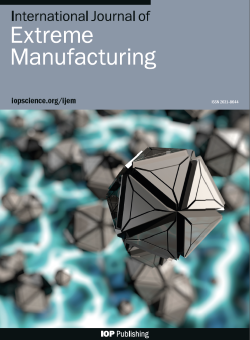CMOS-compatible neuromorphic devices for neuromorphic perception and computing: a review
IF 16.1
1区 工程技术
Q1 ENGINEERING, MANUFACTURING
引用次数: 0
Abstract
Neuromorphic computing is a brain-inspired computing paradigm that aims to construct efficient, low-power, and adaptive computing systems by emulating the information processing mechanisms of biological neural systems. At the core of neuromorphic computing are neuromorphic devices that mimic the functions and dynamics of neurons and synapses, enabling the hardware implementation of artificial neural networks. Various types of neuromorphic devices have been proposed based on different physical mechanisms such as resistive switching devices and electric-double-layer transistors. These devices have demonstrated a range of neuromorphic functions such as multistate storage, spike-timing-dependent plasticity, dynamic filtering, etc. To achieve high performance neuromorphic computing systems, it is essential to fabricate neuromorphic devices compatible with the complementary metal oxide semiconductor (CMOS) manufacturing process. This improves the device’s reliability and stability and is favorable for achieving neuromorphic chips with higher integration density and low power consumption. This review summarizes CMOS-compatible neuromorphic devices and discusses their emulation of synaptic and neuronal functions as well as their applications in neuromorphic perception and computing. We highlight challenges and opportunities for further development of CMOS-compatible neuromorphic devices and systems.用于神经形态感知和计算的cmos兼容神经形态装置:综述
神经形态计算是一种受大脑启发的计算范式,旨在通过模拟生物神经系统的信息处理机制来构建高效、低功耗和自适应的计算系统。神经形态计算的核心是模拟神经元和突触的功能和动态的神经形态设备,使人工神经网络的硬件实现成为可能。基于不同的物理机制,人们提出了各种类型的神经形态器件,如电阻开关器件和双层电晶体管。这些装置已经展示了一系列的神经形态功能,如多状态存储、峰值时间依赖的可塑性、动态滤波等。为了实现高性能的神经形态计算系统,必须制造与互补金属氧化物半导体(CMOS)制造工艺兼容的神经形态器件。这提高了器件的可靠性和稳定性,有利于实现更高集成度和低功耗的神经形态芯片。本文综述了兼容cmos的神经形态器件,并讨论了它们对突触和神经元功能的模拟,以及它们在神经形态感知和计算中的应用。我们强调了进一步发展cmos兼容神经形态器件和系统的挑战和机遇。
本文章由计算机程序翻译,如有差异,请以英文原文为准。
求助全文
约1分钟内获得全文
求助全文
来源期刊

International Journal of Extreme Manufacturing
Engineering-Industrial and Manufacturing Engineering
CiteScore
17.70
自引率
6.10%
发文量
83
审稿时长
12 weeks
期刊介绍:
The International Journal of Extreme Manufacturing (IJEM) focuses on publishing original articles and reviews related to the science and technology of manufacturing functional devices and systems with extreme dimensions and/or extreme functionalities. The journal covers a wide range of topics, from fundamental science to cutting-edge technologies that push the boundaries of currently known theories, methods, scales, environments, and performance. Extreme manufacturing encompasses various aspects such as manufacturing with extremely high energy density, ultrahigh precision, extremely small spatial and temporal scales, extremely intensive fields, and giant systems with extreme complexity and several factors. It encompasses multiple disciplines, including machinery, materials, optics, physics, chemistry, mechanics, and mathematics. The journal is interested in theories, processes, metrology, characterization, equipment, conditions, and system integration in extreme manufacturing. Additionally, it covers materials, structures, and devices with extreme functionalities.
 求助内容:
求助内容: 应助结果提醒方式:
应助结果提醒方式:


